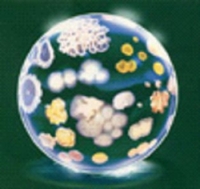Biosafety
Biosafety General Information
Biosafety is the containment principles, technologies and practices that are implemented to prevent unintentional exposure to biological material and toxins, or their accidental release.
What are the responsibilities of the Principal Investigator?
- Obtain a Biosafety Permit through the UBC Research Information System (RISe) prior to using, handling, storing and disposing of any hazardous material.
- Provide an authorized users list both on site and within the RISe online system.
- Ensure that a written procedure is in place for the use, handling, storage and disposal of all biological materials, and for any processes producing hazardous particulates. Some procedures may be found under Standards, Guidelines and Resources
- Ensure that all users (staff, faculty, students and visitors) have the appropriate documented orientation and training for the specific material being handled and/or processes being performed.
- Inform the University through Health, Safety and Environment of any changes to the work being performed and the purchase/transfer/destruction of any biological materials.
- Ensure all incidents/accidents are reported via the Central Accident/Incident Reporting System (UBC CAIRS).
- Complete a Biosafety Risk Assessment
What is the Institutional Biosafety Committee (IBC)?
The IBC includes faculty members selected or appointed because of their expertise or stake in biological safety matters. Collectively, these members advise UBC management and the Biosafety Officer (BSO) on biosafety matters in general, and the effectiveness of Biosafety Programs within the University. Other members include Safety Representatives for specific areas.
Complete information including the terms of reference can be found at the Office of Research Services.
What is a Biosafety risk assessment?
Researchers are required to document their assessment of the risks associated to the materials they are handling and storing. Working safely with biologicals, including animals, encompasses not only the people and the animals, but also the facilities, equipment, procedures used, and environment. Understanding how all the elements work together is essential for determining the risk of the work being done. It is important for everyone to understand the risks from the animals, pharmaceuticals, chemicals, cleaners, biologicals, radiologicals, equipment, and environmental emergencies.
1. Biological Agent: The classification of biological materials is referred to Risk Group in Biosafety. To help determine which risk group to classify your organism, see the following sites:
- Pathogen Safety Data Sheets from Public Health Agency of Canada.
- Schedule 1-5 of the Human Pathogens and Toxins Act.
- ABSA Risk Group Classification.
- Non Pathogenic Organisms List (PDF)
- Unclassified – use the process laid out in the UBC Biosafety Training Manual (PDF)
Please see Biosafety Risk Assessment for additional information and resources.
2. Host (You): The health and experience of each individual is also a factor that needs to be considered. To help determine the immune status of an individual, and available vaccines, please contact Health, Safety and Environment directly.
3. Environmental Factors: The final component of a risk assessment is to assess the environment in which the work is occurring. Specifics such as quantity of the agent, aerosol production and the usage of sharps and needles must be considered. Additionally, factors such as the other research in the surrounding area, the number of people working, equipment, structural integrity of the room (counters, floors, walls) and the safety controls available.
When added all together, the overall risk assessment will allow for the classification of the laboratory space: Containment Level 1 to 4. More information can be found in the Biosafety Training Manual or the Canadian Biosafety Standards.
What are Biosafety risk controls?
Controls should be implemented to reduce risks associated with the work. It is important to consider the hierarchy of controls when implementing control strategies (elimination, substitution, engineering, administrative and personal protective equipment). Specific information relating to Biosafety Cabinets are found in section 3 of the Biosafety Training Manual (PDF).
Biosafety Cabinet Certification is required:
- When installed
- After being moved
- After major services or repairs
- After a HEPA filter replacement
- Annually regardless of what the cabinet is used for
To schedule an appointment for Certification, please contact Health, Safety and Environment. Click here for more information in relation to biosafety cabinets. If you have questions or would like more information, please contact Health, Safety and Environment.
What about plants, insects, pests, environmental samples and GMOs?
Environmental Biological Hazards are now included in the Biosafety Committee purview to help UBC become compliant under the various Environmental Regulations, both federally and provincially. This means if you are using an Environmental Biological Hazard you are required to have a Biosafety Permit. Environmental Biological Hazards include, but are not limited, to:
- Invasive species – plants, insects, pests (plant and aquatic). Contact Health, Safety and Environment to determine if your organism is considered to be invasive.
- Non-indigenous – plants, insects, soil, water, animal feces.
- Genetically engineered.
Genetically engineered organisms are defined as:
- the plant, animal, or microorganism exhibits characteristics that were not previously observed in that plant, animal or microorganism,
- the plant, animal, or microorganism no longer exhibits characteristics that were previously observed in that plant, animal, or microorganism, OR
- one or more characteristics of the plant, animal, or microorganism not longer fall withing the anticipated range for that plant, animal, or microorganism.
Tracking genetically engineering organisms has always been required, but will now be specifically tracked using RISe. Due to their minimal risk we are excluding detailed lists for non pathogenic E.coli, Arabidopsis, Chlamydomonas, Populus, fruit flies and transgenic mice.
If there are other organisms that should be excluded, please contact HSE directly.
BioSafety Course
The University Biosafety Committee requires that the successful completion of the Laboratory Biological Safety Course be a mandatory requirement for all new staff and new projects involved with Biohazard level 2 or greater, including those working with blood and bodily fluids. This applies to all Principle Investigators/Course Directors, faculty, staff and students conducting work with these materials.
Human error and poor laboratory practices can compromise laboratory safeguards designed specifically to protect workers. Ensuring that laboratory personnel are fully trained is a key factor in the prevention of laboratory accidents and laboratory associated infections. To accomplish this it is essential that all laboratory personnel receive the appropriate training in laboratory safety measures.
With the ever changing hazards associated with doing research it is important to ensure that all personnel are appropriately trained in protocols that are specific to UBC. It is the intent of the University Biosafety Committee to not only ensure compliance with the university regulations, but will also help to prevent exposure of biohazards to its employees.
Laboratory Safety Guidebook
In order to keep the campus community safe and in compliance with applicable regulations and policies, each lab on campus should have a laboratory safety binder for the lab users that is unique to that lab. HSE provides lab managers with a customizable templates to support the development of Laboratory Safety Guidebooks. The intent is that the Guidebook contains University level information related to health, safety and the environment as well as customized laboratory specific information for methods, policies and procedures.
Please contact Health, Safety and Environment at HSE.ok@ubc.ca or (250)807-8656 if you have any questions or concerns regarding Biosafety.



